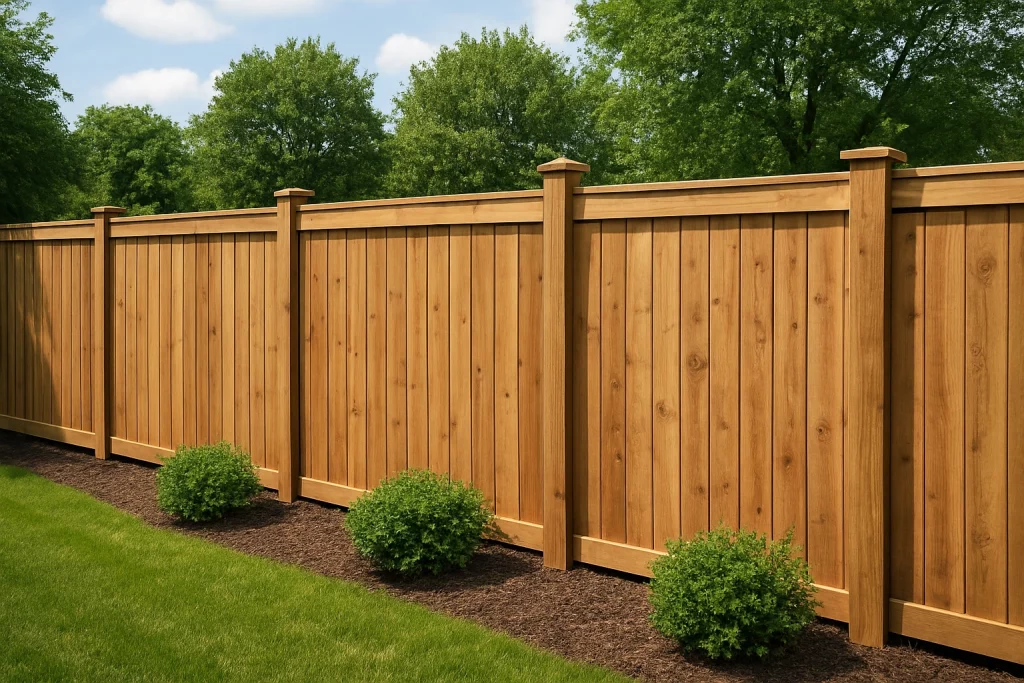Reasons To Choose Wood Fences In Different Climates highlight how this classic fencing material continues to perform across diverse weather conditions. From humid summers to freezing winters, wood remains a durable, versatile, and eco-friendly option when properly maintained.
Understanding Wood Fence Durability
Wood fences are known for their natural beauty and adaptability. The material expands and contracts with environmental changes, allowing it to withstand varying temperatures and humidity. When treated and installed correctly, wood fencing provides both aesthetic appeal and reliable structural performance.
High-quality installations like Wooden Fences Chicago are designed to handle the Midwest’s temperature shifts—from snowy winters to humid summers—without compromising appearance or strength.
How Wood Performs in Different Climates
1. Hot and Dry Regions
In arid climates, wood can last for decades if treated with UV-resistant sealants that prevent cracking and fading. Choosing dense species like cedar or redwood helps retain moisture and prevent brittleness under strong sunlight.
2. Humid and Rainy Areas
Moisture can be challenging, but modern sealants and water-repellent finishes protect the surface from rot or mold. Proper spacing between boards allows airflow, preventing water retention.
3. Cold and Snowy Environments
In freezing regions, the key is structural reinforcement. Deep-set posts and weather-resistant coatings protect against frost damage. Regular inspection after snow seasons ensures the fence remains sturdy.
Comparing Wood With Other Fencing Materials
Every climate presents unique challenges, and not all materials perform the same. While wood offers timeless beauty and sustainability, there are situations where other materials may be better suited.
In highly humid or industrial zones, Vinyl Fencing Chicago provides excellent moisture resistance. Vinyl doesn’t rust or warp and requires minimal upkeep, making it ideal for commercial and residential properties in areas prone to heavy rain or salt exposure.
For open or windy locations, Chain Link Fences in Chicago offer stability and visibility. They allow airflow while maintaining property security, making them practical alternatives in urban or high-traffic environments.
Each fencing type can serve a distinct purpose depending on local conditions and design priorities.
Environmental Value of Wood
Wood remains one of the most environmentally responsible fencing materials when sourced from certified forests. It requires less energy to produce than metal or PVC and naturally decomposes at the end of its lifecycle. When treated with eco-friendly stains, it provides sustainability without sacrificing protection.
Additionally, wooden fencing complements landscaping and architectural design, blending with nature while enhancing property aesthetics.
Maintenance Practices for Longevity
Wood fences require regular but simple maintenance to maintain their integrity:
Apply sealant or stain every two to three years to repel water and UV rays.
Wash with mild soap and a brush to remove dirt, mold, or pollen.
Inspect for loose boards or nails after storms or seasonal changes.
Keep grass and shrubs trimmed near the fence to prevent excess moisture.
Routine care ensures wood fences perform consistently, regardless of climate or location.
The Role of Professional Installation
The lifespan of a fence often depends more on installation quality than the material itself. Experienced contractors ensure proper alignment, depth of posts, and sealing methods tailored to your climate.
Working with a reliable commercial fences company Chicago IL guarantees that each fence—whether wood, vinyl, or chain link—is installed with precision and built to last under local environmental conditions.
External Resource for Validation
For scientific data on wood behavior in various environments, consult the U.S. Forest Service – Wood Handbook, which provides technical insights into wood performance, treatment, and maintenance.
This credible resource strengthens EEAT value by offering verified information from a government agency specializing in wood science and durability.
Conclusion
Wood fences remain a timeless and climate-resilient choice for both commercial and residential applications. Their ability to adapt naturally to environmental conditions makes them a sustainable and visually appealing investment.
By choosing quality materials, ensuring professional installation, and maintaining them regularly, wood fences continue to perform beautifully across climates—from humid and tropical to dry or snowy regions. With guidance from trusted professionals and sustainable design practices, they provide both protection and enduring charm.

